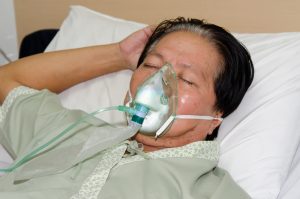What is coronavirus?
 Coronaviruses are a large family of viruses that are known to cause illness ranging from the simple common cold to more severe diseases such as Middle East Respiratory Syndrome (MERS) and Severe Acute Respiratory Syndrome (SARS). We see many types of Coronaviruses here in Ontario and Canada. The disease is called a novel coronavirus because it is a new type of coronavirus that has not been reported before. Currently, experts believe that the new virus was introduced to humans from an animal source.
Coronaviruses are a large family of viruses that are known to cause illness ranging from the simple common cold to more severe diseases such as Middle East Respiratory Syndrome (MERS) and Severe Acute Respiratory Syndrome (SARS). We see many types of Coronaviruses here in Ontario and Canada. The disease is called a novel coronavirus because it is a new type of coronavirus that has not been reported before. Currently, experts believe that the new virus was introduced to humans from an animal source.
The majority of cases of the novel coronavirus are in Wuhan, China. Some cases are being reported in other parts of China, Thailand, South Korea, Japan, USA and Canada, many of which seem to be related to the original outbreak in Wuhan.
Note: All content found on this page has been sourced via the York Region Public Health website.
How to protect yourself and others
- Avoid touching your eyes, nose or mouth with unwashed hands
- Wash your hands frequently and thoroughly, including between your fingers, under your fingernails and your wrists. If soap and water are not available, use an alcohol-based hand sanitizer
- Cover your cough or sneeze using a tissue or into your elbow or sleeve, being sure to cover your mouth. Put used tissue in the garbage and wash your hands after or use alcohol-based hand sanitizer
- If you are sick, stay home from work or school until your symptoms resolve
- Avoid close contact with anyone showing symptoms of respiratory illness such as coughing and sneezing
What are the symptoms associated with this illness?

Common symptoms of coronaviruses vary based on the type of coronavirus, but can often include symptoms like fever, cough, runny nose, sore throat and headache. So far, authorities are reporting that the most common symptoms of the novel coronavirus include: fever, new or worsening cough or shortness of breath.
How are coronaviruses spread?
 Known Coronaviruses:
Known Coronaviruses:
These types of coronaviruses are responsible for causing the common cold and can spread from person to person, usually after close contact with an infected person (e.g., in a household, workplace or health care setting) through respiratory secretions (e.g., a runny nose or saliva) and droplets present in the air from coughing or sneezing; or through touching surfaces contaminated with respiratory droplets, then touching your mouth, nose, or eyes before washing your hands.
Novel Coronavirus:
As this is a new disease, much about it is still unknown. While there is evidence of some person-to-person transmission, it is yet to be confirmed how easily the disease spreads from person-to-person; for example if the spread is limited to only close or prolonged contact with a case.
Mask Fit Testing
Our team is currently working to schedule Mask Fit Testing sessions for February and March – please keep an eye on your mobile phone as we will be sending out a Memo once these future test dates and locations are confirmed. We recommended attending these sessions if you have not had Mask Fit Testing completed within the last 2 years.
For anyone who may want to confirm their current mask size, you can reach out to Kai in Human Resources at x263.
Febrile Respiratory Screening Tool
This screening tool has been updated for use by employees working in the community. All Client Services Supervisors, Social Workers and Case Managers are required to call their clients prior to each home visit to complete the FRI screener tool.
PSWs now see a new task in the care plan section related to the FRI screening tool. All PSWs should remain vigilant in cleaning their hands, and report clients who are experiencing flu-like symptoms.
Where to find official status updates and information on Coronavirus:
The Ontario Ministry of Health site is updated daily with the most up-to-date information on the status of cases in Ontario. It also includes information on how to protect yourself and how to recognize possible symptoms. The Ministry site should be the first point of reference for employees, clients and family members.
